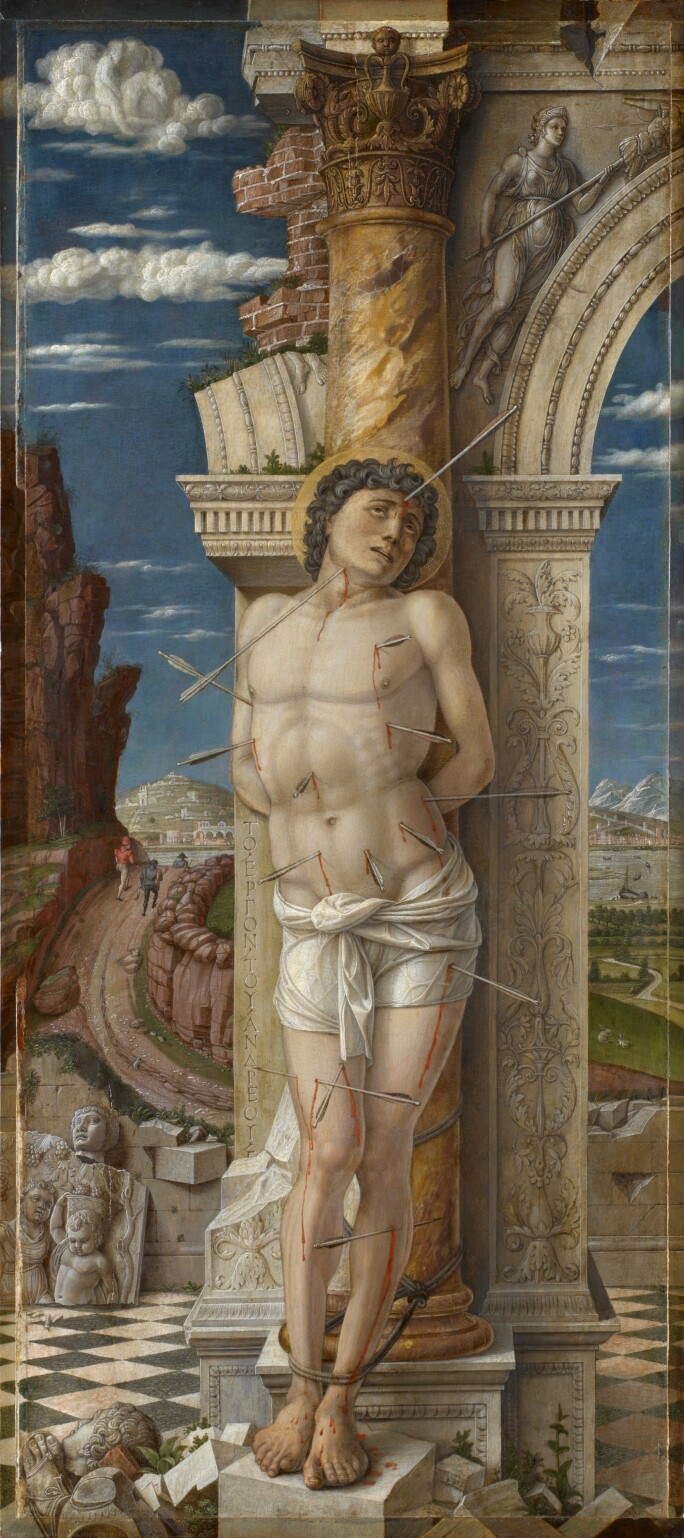'My photographs don’t go below the surface. They’re readings of what’s on the surface. I have great faith in surfaces.'
Richard Avedon and Andy Warhol had similar backgrounds and early career paths. Born five years apart in the 1920s to East European immigrant families, Avedon was the son of a Russian-born Jewish émigré while Warhol (né Warhola) was born to parents from Austria-Hungary. Both started their careers in the New York fashion world and, although their paths eventually diverged, they continued to move in the same New York circles.
On 5 April 1969, Avedon went to Warhol’s Factory for the first of eight sittings focusing on the Pop artist and his entourage. Avedon took this portrait of Warhol in August 1969, one year after he had survived an assassination attempt by radical feminist Valerie Solanas. A bullet had gone through his lungs, spleen, stomach, liver and esophagus. He was in surgery for five hours and stayed in the hospital for two months, fueling rumors that he had died momentarily and was brought back to life.
Avedon’s images are perhaps the most raw documents of this traumatizing period in Warhol’s life. While Avedon took many images that day, several of which include Warhol’s full body, the most poignant image, shown here, features only his scarred torso and leather-clad arms. By omitting Warhol’s head and lower body, Avedon transformed the image from a portrait of Warhol to one loaded with symbolism pertaining to human pain, suffering, martyrdom, and even fetish.

Artist Wayne Koestenbaum wrote that Warhol’s assault made it ‘possible, now, to see Warhol himself as one of the martyrs his art was devoted to apotheosizing.’ Here, Warhol’s right hand presses his stomach while his left hand tugs at the elastic band of his girdle. The pose recalls gestures, iconography, and composition used by 15th and 16th century painters such as Mantegna, Titian, and de Ribera. Particularly notable is the similarity of Avedon’s portrait to one of Mantegna’s most well known works, Saint Sebastian, which depicts the martyr pierced by 8 arrows in his torso.
This photograph, monumental in scale, is the format Avedon used for his solo exhibition in 1975 at Marlborough Gallery.